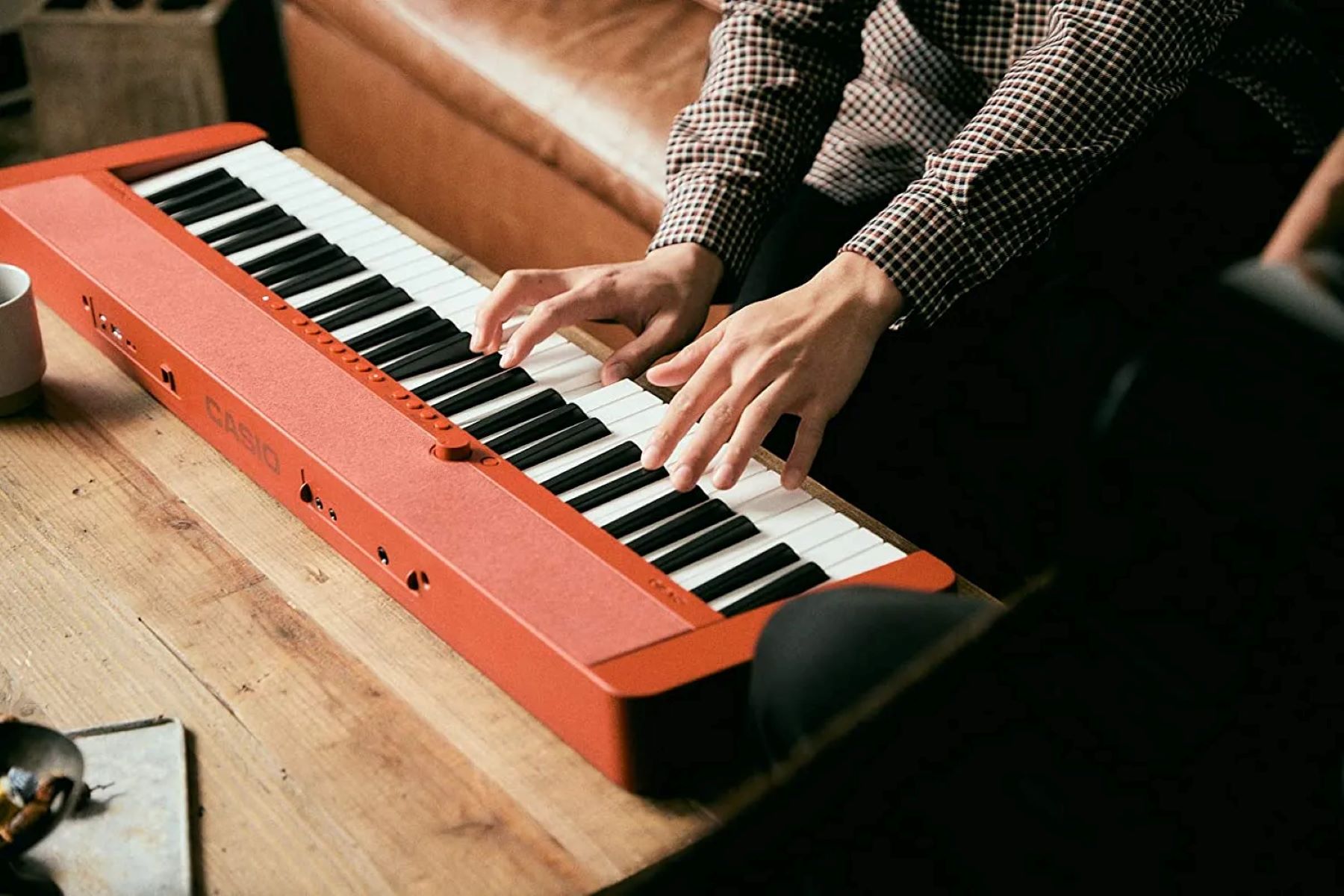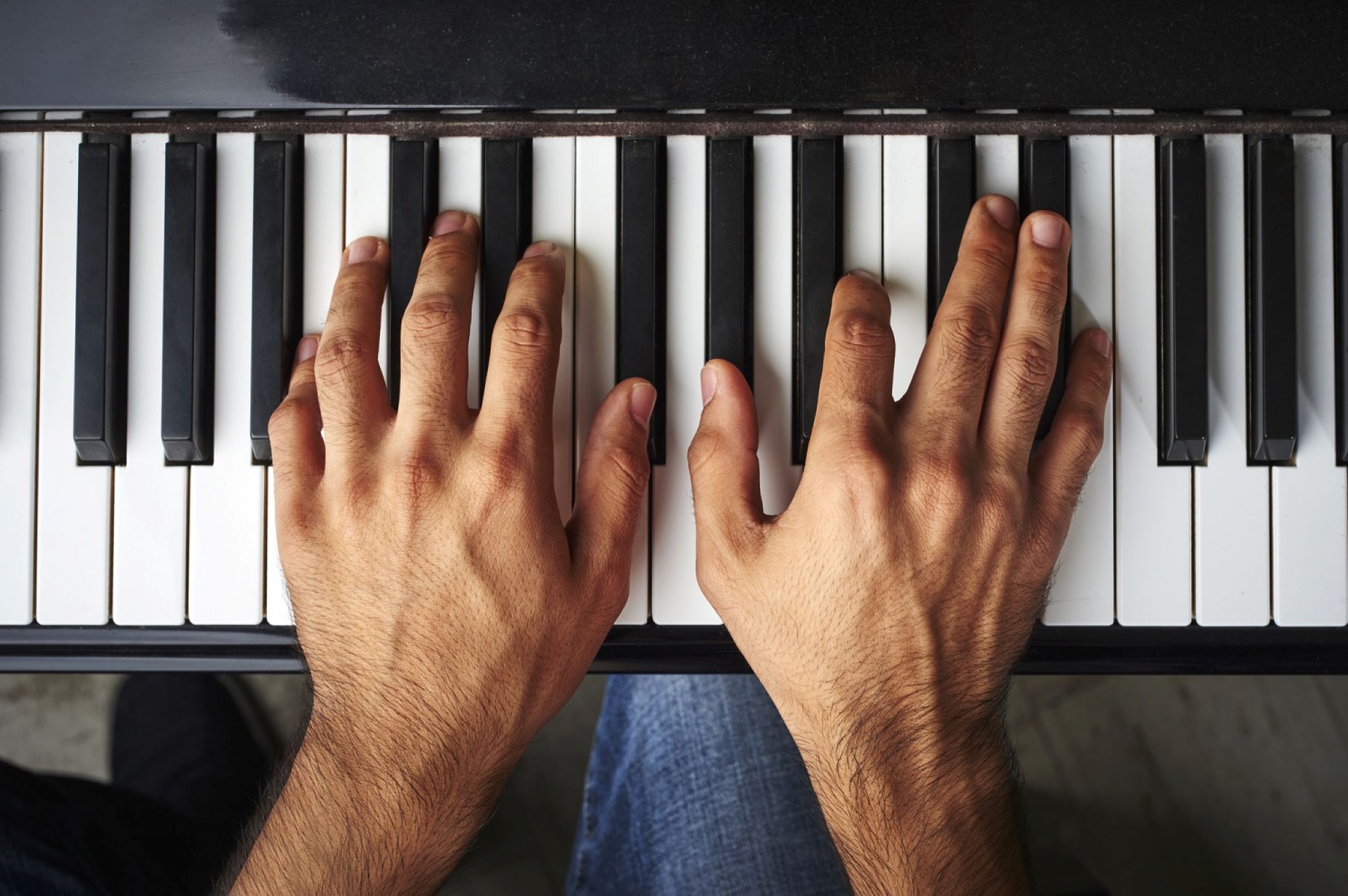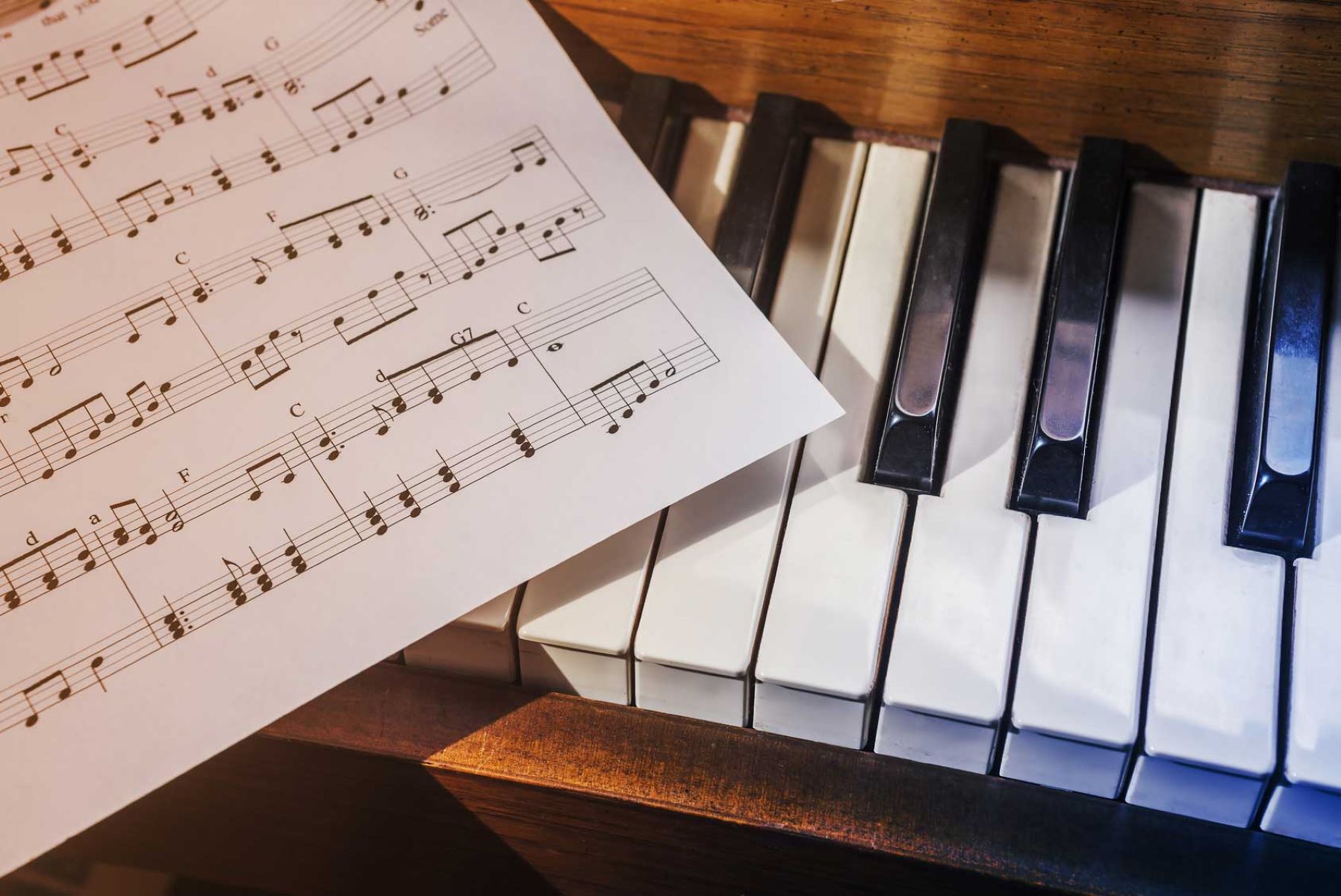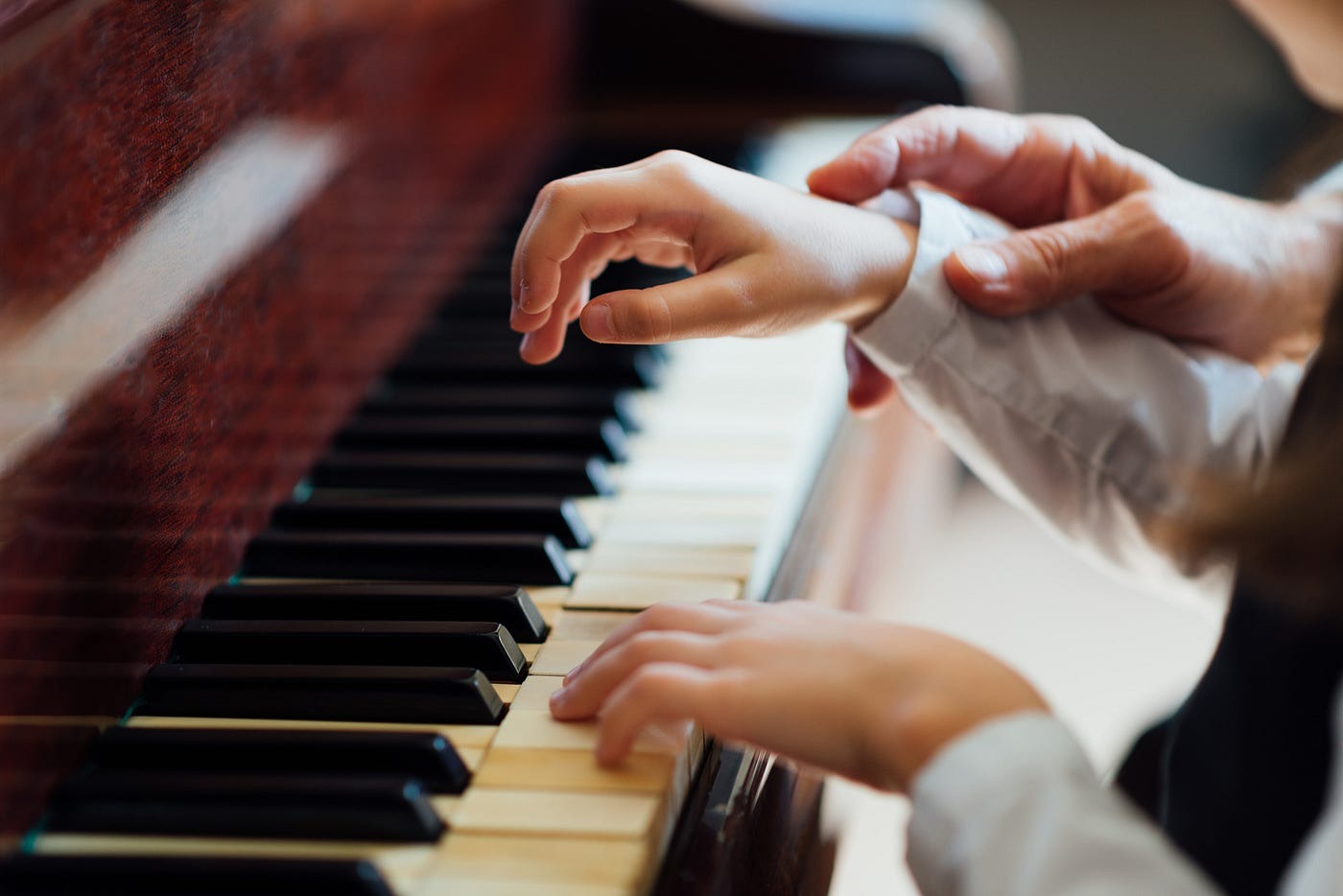Home>Instruments>Piano>How To Learn The Piano Keyboard
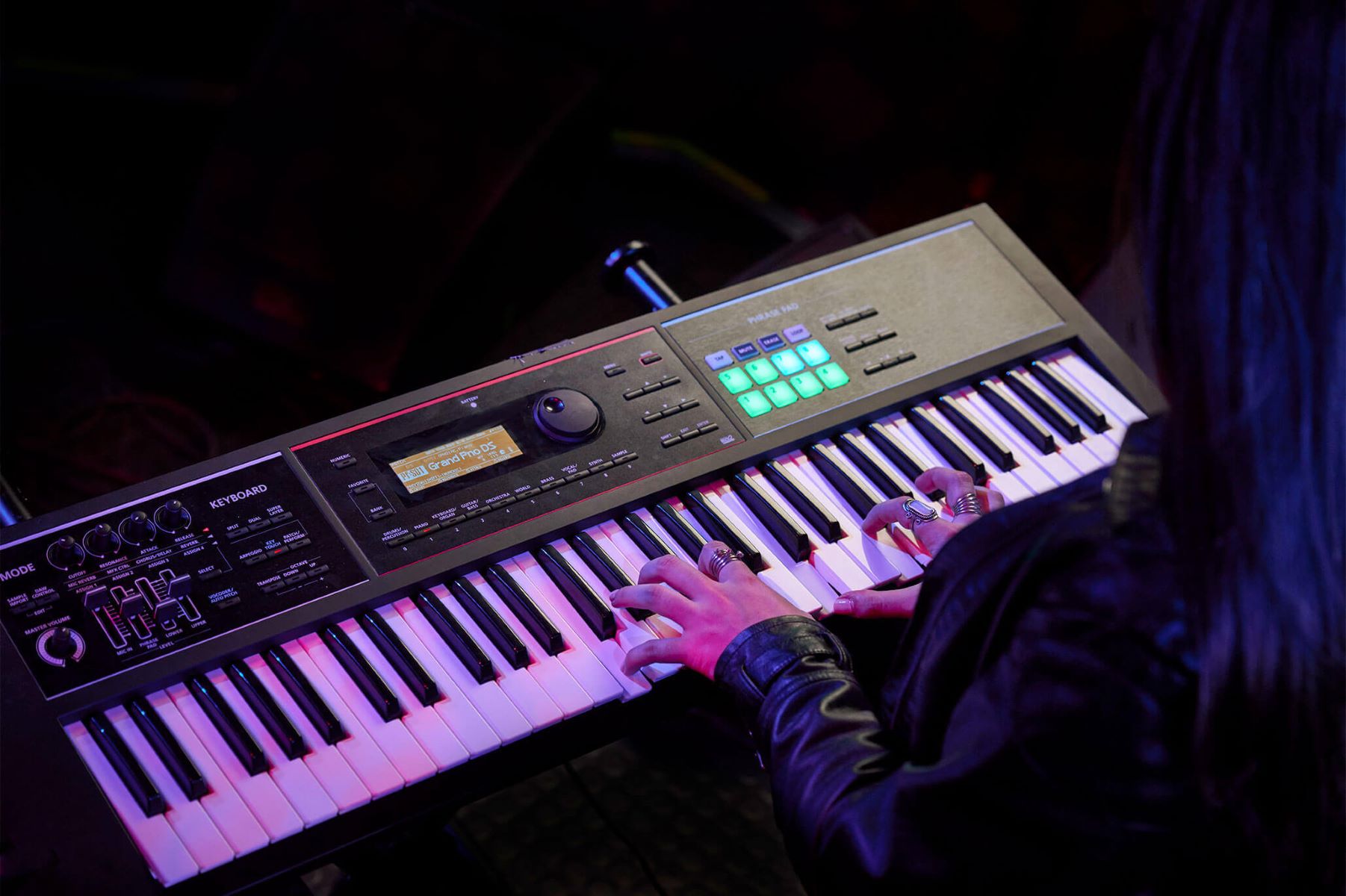

Piano
How To Learn The Piano Keyboard
Published: February 11, 2024
Learn how to play the piano keyboard with our comprehensive guide. Master the piano and impress everyone with your musical skills. Start your musical journey today!
(Many of the links in this article redirect to a specific reviewed product. Your purchase of these products through affiliate links helps to generate commission for AudioLover.com, at no extra cost. Learn more)
Table of Contents
- Introduction
- Getting Familiar with the Piano Keyboard
- Understanding the Basics of Music Theory
- Learning Proper Hand Position and Technique
- Practicing Scales and Chords
- Developing Sight-Reading Skills
- Mastering Rhythm and Timing
- Exploring Different Musical Styles
- Utilizing Resources for Continued Learning
- Conclusion
Introduction
Introduction
Learning to play the piano is an incredibly rewarding journey that offers a blend of artistic expression, mental stimulation, and emotional fulfillment. Whether you're a complete beginner or have some musical background, mastering the piano keyboard can open up a world of possibilities in music. This comprehensive guide is designed to provide you with a roadmap for embarking on this musical adventure, offering insights into the foundational aspects of piano playing and the steps to take in order to become proficient in playing this majestic instrument.
The piano is a versatile and expressive instrument that has been a staple in various musical genres for centuries. From classical compositions to contemporary pop songs, the piano's rich tonal range and harmonic capabilities make it a captivating instrument to learn and master. With dedication, practice, and the right guidance, anyone can develop the skills to play the piano with confidence and artistry.
In the following sections, we will delve into the essential elements of learning the piano keyboard, starting with getting familiar with the layout of the keys and understanding the basics of music theory. We will then explore the importance of proper hand position and technique, the significance of practicing scales and chords, and the development of sight-reading skills. Additionally, we will discuss the mastery of rhythm and timing, the exploration of different musical styles, and the utilization of resources for continued learning.
Whether your goal is to play classical sonatas, jazz standards, or modern pop tunes, the knowledge and skills gained from learning the piano keyboard will serve as a solid foundation for your musical endeavors. By following the guidance provided in this guide, you will be well on your way to unlocking the beauty and artistry of piano playing. So, let's embark on this musical journey together and discover the wonders of the piano keyboard.
Getting Familiar with the Piano Keyboard
Before diving into the intricacies of playing the piano, it’s essential to become acquainted with the instrument itself. The piano keyboard consists of 88 keys, including white and black keys, spanning seven octaves. The layout follows a repeating pattern of 12 notes, with the black keys representing sharps (#) and flats (b) of the adjacent white keys. Understanding this layout is fundamental to navigating the keyboard with ease and precision.
As a beginner, it’s beneficial to familiarize yourself with the names of the keys and their corresponding musical notations. The white keys are labeled with the letters A to G, and this pattern repeats throughout the keyboard. The black keys, known as sharps or flats, add semitone intervals to the notes. By recognizing these patterns and relationships, you can begin to develop a mental map of the keyboard, facilitating smoother transitions between notes and chords.
Furthermore, gaining an understanding of the concept of octaves is crucial. An octave encompasses eight notes, including the starting and ending notes. Identifying octaves on the keyboard allows for a deeper comprehension of musical intervals and harmonies, laying the groundwork for more advanced playing techniques.
As you familiarize yourself with the piano keyboard, take the time to observe the symmetry and logic in its layout. This understanding will aid in memorizing scales, chords, and melodies, ultimately enhancing your overall proficiency as a pianist. Additionally, exploring the tactile sensation of pressing the keys and observing the corresponding sounds will contribute to your kinesthetic and auditory awareness, fostering a strong connection between your fingers and the music produced.
By immersing yourself in the layout and mechanics of the piano keyboard, you set the stage for a fulfilling and informed musical journey. Embrace the exploration of this foundational aspect of piano playing, and you will pave the way for a solid grasp of the instrument’s capabilities and intricacies.
Understanding the Basics of Music Theory
Music theory serves as the backbone of musical understanding and proficiency, providing a framework for interpreting and creating music. As you embark on your piano journey, delving into the fundamentals of music theory will significantly enrich your playing and comprehension of music as a whole.
At its core, music theory encompasses the study of notation, scales, chords, rhythm, harmony, and structure. Familiarizing yourself with these elements will empower you to read sheet music, grasp the construction of melodies and harmonies, and communicate effectively with other musicians.
One of the fundamental concepts in music theory is understanding the construction of scales. Scales form the basis of melodies and harmonies, and they are integral to understanding the tonal relationships between notes. The major and minor scales, in particular, are essential building blocks in piano playing, and mastering their patterns and intervals will enhance your ability to interpret and perform a wide range of musical pieces.
Chords, which are formed by stacking notes in specific intervals, are another crucial aspect of music theory. Learning to identify and play chords on the piano opens the door to harmonization and accompaniment, allowing you to enrich melodies and create full-sounding musical arrangements.
Rhythm, the temporal aspect of music, is also a key component of music theory. Understanding rhythmic notation and time signatures will enable you to interpret and execute musical passages with precision and expressive timing.
As you delve into music theory, you’ll encounter terms such as dynamics, articulation, and musical form, each contributing to the nuanced interpretation and performance of piano music. By immersing yourself in these foundational concepts, you’ll develop a holistic understanding of music that transcends individual notes and delves into the expressive and communicative nature of musical artistry.
Embracing the basics of music theory will not only enhance your technical skills but also deepen your appreciation for the art of piano playing. By laying a strong theoretical foundation, you’ll embark on your musical journey with insight and confidence, setting the stage for a fulfilling and enriching exploration of the piano keyboard.
Learning Proper Hand Position and Technique
Developing proper hand position and technique is essential for mastering the piano and achieving fluidity and control in your playing. The way you position your hands and approach the keys significantly impacts your ability to execute melodies, chords, and intricate passages with precision and ease.
When sitting at the piano, maintain a relaxed yet upright posture, allowing for freedom of movement and unhindered access to the entire keyboard. Your arms should be parallel to the floor, and your feet flat on the ground, fostering stability and balance as you engage with the instrument.
As you position your hands on the keys, aim for a natural and curved shape in your fingers, avoiding stiffness and tension. The fingertips should make contact with the keys, and the weight of your arms should be channeled into the keys, producing a resonant and controlled sound. This approach, known as “playing from the weight,” promotes a rich and expressive tone while minimizing strain on the fingers and wrists.
Furthermore, dividing the fingers into numbered positions, with the thumb designated as “1” and the pinky as “5,” facilitates efficient navigation of the keyboard and the execution of various finger patterns. This numbering system, often referred to as finger numbering or fingering, is integral to mastering scales, arpeggios, and complex passages, ensuring smooth and coordinated movement across the keys.
As you practice scales, exercises, and repertoire, pay close attention to the evenness of your touch and the consistency of sound production across all fingers. Cultivating a balanced and controlled touch will enable you to convey musical expression and dynamics effectively, elevating your performances and interpretations of musical pieces.
It’s important to note that developing proper hand position and technique is a gradual process that requires patience and mindful practice. Regularly incorporating exercises focused on finger strength, flexibility, and dexterity will contribute to the refinement of your technical skills, ultimately empowering you to tackle a diverse range of musical styles and challenges with confidence.
By prioritizing proper hand position and technique, you lay a solid foundation for your piano journey, fostering a harmonious relationship between your body and the instrument. Embrace the nuances of hand positioning and technique, and you will unlock a world of expressive possibilities at the piano.
Practicing Scales and Chords
Delving into the world of scales and chords is a pivotal aspect of honing your piano skills and building a strong musical foundation. Scales, which are sequences of notes arranged in specific patterns, and chords, which are harmonious combinations of notes played simultaneously, form the bedrock of melodic and harmonic understanding in piano playing.
Mastering scales across different keys is essential for developing finger agility, coordination, and an intuitive understanding of musical intervals. The major and minor scales, in particular, serve as fundamental building blocks for navigating the keyboard and constructing melodic lines. By practicing scales in various rhythmic patterns and articulations, you enhance your technical proficiency and gain fluency in traversing the full range of the piano.
Furthermore, delving into arpeggios, which are broken chords played in a flowing and connected manner, contributes to your dexterity and understanding of harmonic structures. Arpeggios provide a platform for exploring the vertical dimension of music, allowing you to internalize the relationships between individual notes within chords and their inversions.
In parallel with scale practice, dedicating time to mastering chords and their inversions equips you with the tools to accompany melodies, harmonize tunes, and explore the rich world of harmonies on the piano. By familiarizing yourself with common chord progressions and voicings, you expand your musical vocabulary and cultivate a keen ear for harmonic movement and resolution.
As you engage in scale and chord practice, focus on achieving a balanced and even sound across all notes, maintaining consistent finger strength and control. Pay attention to the fluidity of your transitions between notes and chords, striving for seamless and connected movement that transcends individual keystrokes.
Consistent and deliberate practice of scales and chords lays the groundwork for confident and expressive piano playing, enabling you to navigate diverse musical genres and repertoire with proficiency and artistry. Embrace the journey of scale and chord exploration, and you will unlock a wealth of musical possibilities at your fingertips.
Developing Sight-Reading Skills
Sight-reading, the ability to play music from a written score without prior preparation, is a valuable skill that empowers pianists to explore new pieces and expand their repertoire with confidence and fluency. Developing proficient sight-reading skills not only broadens your musical horizons but also enhances your overall musicianship and adaptability.
When approaching sight-reading, it’s important to start with pieces that align with your current proficiency level, gradually increasing the complexity as your skills evolve. Begin by scanning the score to grasp the key signature, time signature, tempo markings, dynamics, and overall structure of the piece. Familiarizing yourself with these elements provides a roadmap for interpreting the music as you play.
As you delve into sight-reading, strive for a balance between accuracy and continuity. Focus on maintaining a steady tempo and rhythmic precision while capturing the essence and character of the music. Embrace the nuances of phrasing and dynamics, infusing the piece with musical expression as you navigate through unfamiliar passages.
Consistent sight-reading practice exposes you to diverse musical styles, tonalities, and rhythmic patterns, expanding your musical vocabulary and understanding. It cultivates adaptability and quick decision-making, honing your ability to process musical information on the spot and translate it into fluid and expressive piano playing.
Additionally, incorporating sight-reading exercises into your practice routine fosters a deeper connection between visual recognition of musical notation and the physical execution on the keyboard. This integration strengthens your overall musicianship and accelerates the learning process, enabling you to approach new pieces with confidence and curiosity.
Embrace the journey of sight-reading as an opportunity for musical exploration and growth. With consistent practice and a spirit of openness, you will enhance your adaptability, expand your repertoire, and infuse your piano playing with a sense of spontaneity and discovery.
Mastering Rhythm and Timing
Rhythm and timing form the heartbeat of music, infusing it with vitality, momentum, and expressive character. Mastering these essential elements is pivotal for pianists, as it underpins the coherence, precision, and emotive power of their performances.
Developing a strong sense of rhythm involves internalizing different rhythmic patterns, time signatures, and syncopations. It’s crucial to practice with a metronome to cultivate a steady and unwavering sense of pulse. This disciplined approach fosters a deep-seated understanding of rhythmic subdivisions and accents, allowing you to navigate intricate passages with clarity and assurance.
Furthermore, honing your timing involves the art of phrasing and expressive interpretation. Embracing the ebb and flow of musical phrases, understanding the nuances of rubato, and integrating subtle variations in tempo contribute to the emotive and communicative aspects of your playing.
An essential aspect of mastering rhythm and timing is developing a keen ear for syncopations, off-beat accents, and rhythmic groupings. This heightened awareness enables you to infuse your playing with dynamic and engaging rhythmic textures, adding depth and vitality to your interpretations.
As you delve into the intricacies of rhythm and timing, explore diverse musical styles and genres, each offering unique rhythmic characteristics and challenges. Embrace the rhythmic diversity found in classical compositions, jazz standards, and contemporary pieces, allowing each style to enrich your rhythmic sensibilities and expand your expressive palette.
Consistent and focused practice, combined with attentive listening and internalization of rhythmic patterns, paves the way for mastering rhythm and timing. Embrace the rhythmic intricacies of music as a source of creative expression and dynamism, infusing your piano playing with a captivating sense of rhythmic vitality and precision.
Exploring Different Musical Styles
One of the most captivating aspects of learning the piano is the opportunity to explore a diverse array of musical styles, each offering its own unique characteristics, challenges, and expressive possibilities. Embracing a variety of musical genres not only enriches your musical experience but also broadens your artistic horizons, fostering versatility and creativity in your playing.
Classical music, with its rich history and vast repertoire, offers pianists a wealth of timeless compositions that showcase technical prowess, emotional depth, and interpretive nuance. Delving into the works of renowned composers such as Bach, Mozart, Beethoven, and Chopin provides a profound understanding of musical form, structure, and historical context, nurturing a deep appreciation for the classical tradition.
Jazz, with its emphasis on improvisation, swing rhythms, and harmonic innovation, presents an exciting avenue for pianists to explore expressive freedom and spontaneity. Immersing yourself in jazz standards, blues progressions, and improvisational techniques cultivates a dynamic and interactive approach to piano playing, fostering improvisational skills and a strong sense of rhythmic vitality.
Contemporary and popular music encompass a wide spectrum of styles, from pop and rock to R&B and film music. Engaging with contemporary repertoire allows pianists to connect with modern audiences, experiment with diverse soundscapes, and adapt their playing to current musical trends, showcasing adaptability and relevance in their performances.
By embracing a multifaceted approach to musical exploration, pianists develop a well-rounded skill set that transcends stylistic boundaries. Each genre offers distinct technical and expressive challenges, encouraging pianists to cultivate a versatile and adaptable playing style that resonates with the essence of each musical idiom.
Embracing the exploration of different musical styles is an invitation to embark on a rich and diverse musical journey. By immersing yourself in the nuances of classical, jazz, and contemporary repertoire, you expand your artistic palette, nurture a spirit of curiosity and open-mindedness, and ultimately enrich your piano playing with a tapestry of expressive colors and stylistic influences.
Utilizing Resources for Continued Learning
As you progress in your piano journey, leveraging a diverse range of resources is instrumental in nurturing continuous growth, expanding your musical knowledge, and refining your playing skills. Whether you’re seeking guidance on technique, exploring new repertoire, or delving into music theory, a wealth of resources is available to support and inspire your ongoing learning.
One of the most valuable resources for pianists is comprehensive and well-structured piano method books. These resources offer a systematic approach to learning, covering essential techniques, music theory, and repertoire in a progressive manner. Method books cater to various proficiency levels, providing a roadmap for skill development and musical exploration.
Sheet music and scores serve as a treasure trove of musical inspiration, offering a vast array of classical, contemporary, and educational repertoire. Exploring diverse musical compositions exposes pianists to different styles, forms, and historical periods, nurturing a deep appreciation for the richness and diversity of piano music.
Online platforms and digital resources have revolutionized the accessibility of learning materials for pianists. From interactive video tutorials and virtual masterclasses to digital sheet music libraries and practice apps, the digital landscape provides a wealth of tools for honing technical skills, exploring new genres, and connecting with a global community of musicians.
Engaging with experienced piano teachers and mentors offers invaluable guidance, personalized feedback, and mentorship in your musical journey. Regular lessons and coaching sessions provide a supportive environment for skill development, interpretation refinement, and the cultivation of a nuanced and expressive playing style.
Participating in piano workshops, music festivals, and collaborative projects fosters a sense of community, inspiration, and artistic growth. These immersive experiences offer opportunities to connect with fellow musicians, receive constructive feedback, and showcase your artistry in a supportive and encouraging environment.
Embracing a multifaceted approach to utilizing resources for continued learning empowers pianists to embark on a dynamic and enriching musical journey. By harnessing the wealth of educational materials, digital tools, mentorship, and collaborative opportunities, you cultivate a holistic and evolving approach to piano playing, nurturing a lifelong passion for musical exploration and artistic expression.
Conclusion
Congratulations on embarking on this enriching journey into the world of piano playing. Throughout this comprehensive guide, we have explored the foundational elements of learning the piano keyboard, from becoming familiar with the instrument to delving into music theory, technique, and the exploration of diverse musical styles. As you continue on your path of musical discovery, remember that patience, dedication, and a spirit of curiosity are your greatest allies in this endeavor.
Learning the piano is a deeply rewarding pursuit that offers not only the acquisition of technical skills but also a profound connection to the expressive and emotive language of music. As you navigate the keyboard, remember to embrace the tactile sensation of the keys, allowing your fingers to dance across the notes with grace and intention.
Understanding the nuances of music theory provides a roadmap for interpreting and creating music, enriching your playing with a deeper understanding of melody, harmony, and structure. Embracing proper hand position and technique fosters a harmonious relationship between your body and the instrument, unlocking the potential for nuanced and expressive performances.
Practicing scales and chords lays the groundwork for technical proficiency and harmonic understanding, while developing sight-reading skills nurtures adaptability and expands your repertoire with confidence. Mastering rhythm and timing infuses your playing with vitality and precision, enhancing the communicative power of your interpretations.
Exploring diverse musical styles invites you to embrace a tapestry of expressive colors and stylistic influences, fostering a versatile and adaptable playing style. Finally, utilizing a diverse range of resources for continued learning empowers you to nurture continuous growth, refine your skills, and connect with a global community of musicians.
As you continue your piano journey, remember that each moment spent at the keyboard is an opportunity for self-expression, creativity, and personal growth. Embrace the challenges, savor the triumphs, and let the music guide you on a transformative and fulfilling path. Whether you aspire to perform on grand stages, compose your own music, or simply find solace in the melodies you create, the piano offers a boundless canvas for artistic exploration and emotional resonance.
With each note you play, you contribute to a timeless and universal language that transcends barriers and speaks to the depths of the human experience. The piano, with its expressive range and emotive power, becomes not only an instrument but a companion on your journey, guiding you toward moments of beauty, introspection, and connection.
So, as you continue to nurture your passion for piano playing, may the music you create echo with authenticity, joy, and the enduring spirit of artistic exploration. Embrace the keys, cherish the melodies, and allow the piano to be a source of inspiration, creativity, and profound self-discovery.


